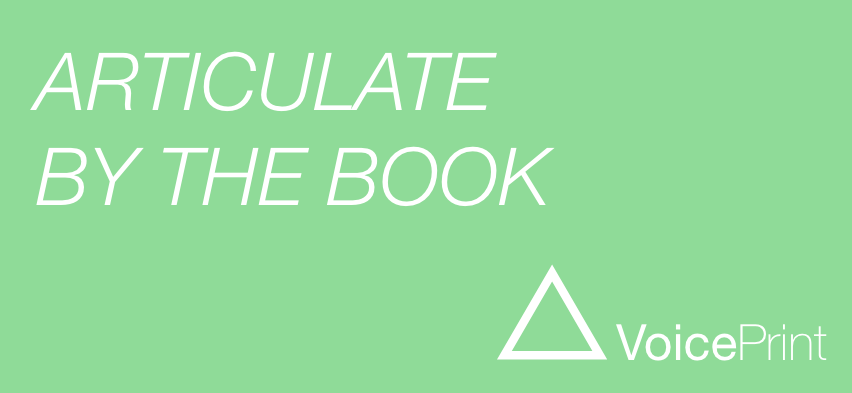“Good morning, ladies and gentlemen, this is your Captain speaking.” As you read the words, I expect you can already hear the familiar sound of the voice. The diction is crisp and clear. The accent is educated. The pace is business-like but unhurried. The message is concise and instructional. The tone is relaxed, confident and reassuring. Such is the speech of the commercial airline pilot, as much a part of the uniform as the smartly cut suit, the braid rings on the sleeve and the peaked cap. You might almost imagine that airlines carry a piece of equipment which transponds pilots’ own voices to make them all sound the same.
But while we hear from pilots before take-off and again, more briefly, on landing, that’s pretty much all we ever hear them say. Even when we’re receiving in-flight instruction, the message is usually relayed through the cabin crew. “The Captain has switched on the seat-belt signs. You must now return to your seats.” The pilot’s silence is part of the normality, part of the business of reassuring the passengers. It lets us know that the people in the driving seats are busy concentrating on what only they can do.
So what sort of conversations are going on behind the closed door of the cockpit? What are the voices at work on the flight deck?
Charlie Dalgleish spent his career as a pilot with one of the world’s biggest and best-known airlines. By the time he retired he had accumulated many years of experience both as a Captain on long-haul routes and also as a senior Training Captain, entrusted with developing the skills and capabilities of the next generation of professional pilots.
As you might expect, safety and operational efficiency are the primary considerations in commercial aviation. It is a working environment governed by regulation and by continually developing sets of Standard Operating Procedures which define what should happen and how things should be done. These procedures cover more than just the complex technical aspects of maintaining and running a large high-tech vehicle at high speeds in diverse and dynamic conditions. As Charlie explains, the principle of Standard Operating Procedures extends to how members of the crew are expected to work together. Like other process-driven environments, airline operation is full of abbreviations, mnemonics and acronyms which provide a ready shorthand, to those in-the-know, for more elaborate and highly-specified procedures. ‘C.R.M’ for instance defines Cockpit Resource Management, covering the extended crew of pilots, cabin staff, engineers, despatchers and air traffic control.
How does this close regulation affect the way pilots talk? The answer is clearly reflected in Charlie’s VoicePrint profile, where the principal strongly-used voices are Articulate, Diagnose and Direct. Articulation and Diagnosis combine to provide a process of sense-making. The Directive voice sets out the standards and expectations against which this sense-making should be taking place. In effect the pattern of thinking and conversing revealed by this profile is one on which clarity and presence of mind are paramount. Articulate is the voice of situational awareness. It is neutral, observant and clarifying. Diagnose is the voice that recognises and processes problems, that can often anticipate the larger potential issue through being able to discern the pattern and significance in an accumulation of smaller indications and signals. Direct is the voice that calls attention to what’s wrong and insists that it be put right.
It sounds like what you would hope the people in the cockpit are doing.
Pilots work at the interface in the network of human and technical systems which make air travel seem ordinary. They do this by quietly resolving the complications that variations in route, load, altitude, temperature, wind, weather, cloud and traffic inevitably introduce into the actually rather tricky business of getting from A to B. Charlie describes piloting and the way pilots talk as ‘punctuated equilibrium.’ “You talk in a way which will keep the balance between efficiency and useful stress levels. You can chat about other things when not much is changing, but the merest gesture or comment will stop the chat instantly, should the operation require it.” He describes how experience gives you a “double awareness, with the focus on the most important task always in the background or foreground as necessary.”
Being an airline pilot is essentially about maintaining or restoring equilibrium. “Pilots tend to speak in quite a flat voice. There is nothing so distracting and useless as a wall of words.” Equally, long uninterrupted silences can dull the mind. “So gentle chit chat can provide a sufficient level of interest to keep the brain ticking over.”
Extremes of behaviour are unhelpful, when your role is to maintain, over long periods of time, a level of alertness that can immediately shift up a gear when focused diagnosis and hands-on action are required. “Assertive pilots can be intimidating and timid pilots can be easily over-ruled or ignored. Neither trait is productive.” As various air accident investigations have revealed, fatality follows pilots who either won’t listen or won’t speak up, whether those tendencies come from personality, culture or concern for rank.
“The importance of a balanced, open and no-threatening system of communication cannot be over-emphasised,” Charlie explains. “Stress in tone and inflection can ramp up an already stressful situation to the point of confusion. On the other hand, being too cool can trivialise something that needs more thought and attention to resolve.”
People’s lives depend on the quality of communication on the flight deck. Pilot and co-pilot are a necessary double act, both because of the range and diversity of tasks to be carried out, especially during take-off and landing, and also to serve as a fail-safe mechanism to protect against individual human error.
The Articulate voice, with its focus in clarity and creating shared understanding, is the hub around which conversations on the flight deck turn. Questions are not purely open, but a means of checking whether pilot, co-pilot and systems are aligned.
“What SID [standard instrument departure] do you think I should fly?”
“Dav.4J.” [Daventry 4 Juliet]
“Fine. Check that’s in the box.”
(Pause to allow this to happen)
“What’s the first stop altitude?”
“3000.” [3000 feet]
“That’s in the altitude select box.” (pointing at the box)
“Checked.”
Under pressure the Articulate voice remains by far the most prominent feature in Charlie’s VoicePrint profile. It’s an indication of the importance of composure and clarity in a crisis. In this case it is also an indicator, not of verbosity, but of fluency, the delivery of well-rehearsed responses to particular types of situation. Breadth of experience and scenario training are important ingredients in developing a skilful and readily available Articulate voice.
What has to be avoided on the flight deck is ambiguity. That probably explains why Probe and Inquire are the least-used voices in Captain Dalgleish’s repertoire.
None of which means that all pilots attain these high standards. This is illustrated by a story which Charlie tells. (Another common feature among people with a well-developed Articulate voice is that they are often wonderful raconteurs.) So we’ll end this set of insights into life on the flight deck with a fortunately comic example of a failure of awareness and communication between pilots.
“I once flew with a captain who never conversed or shared the operation. Half-way to Helsinki he suddenly said to the co-pilot, ‘I bought a new lawnmower yesterday.’ The co-pilot was so stunned that the captain had actually said something that he made no reply. There was then a change of co-pilot at Helsinki. Half way home the captain again speaks once and once only to say, ‘cuts the grass very well,’ leaving a second co-pilot even more confused than the first.”
A salutary reminder that conversations, like other systems, are only ever as competent as the people who inhabit them.
Alan Robertson

With special thanks to my oldest friend. We used to make model aeroplanes together. He went on to fly the real things.
Ready for a conversation?


